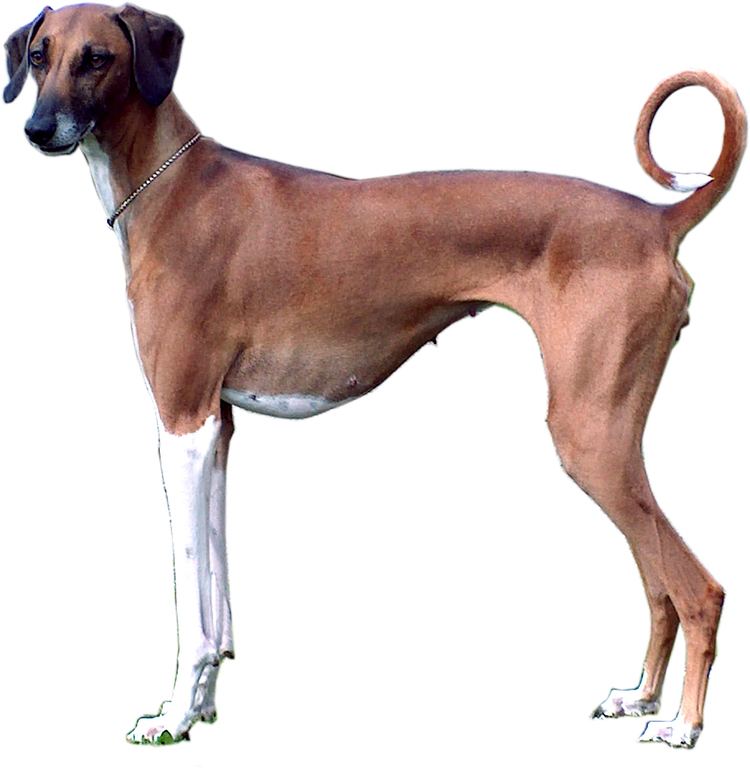 | ||
Sighthound & Pariah Group is the name of a breed Group of dogs, used by the United Kennel Club to classify a defined collection of dog breeds. Sighthound & Pariah Group dogs are not all of the same dog type and may even be of different subspecies (the New Guinea Singing Dog is listed as Canis lupus dingo.) The Fédération Cynologique Internationale refers to Pariah dog types as Primitive types and places them in Group 5 with Spitz types; sighthounds have their own group, Group 10. Other kennel clubs place most hounds together in the Hound Group, and the primitive types in other groups.
Contents
Sighthound and Pariah dog types
Two different types of dogs are listed in this article.
Sighthounds
Hounds are hunting dogs that hunt by endurance, following the scent of a game animal (scent hounds); or by speed, following the animal by sight (sighthounds). There are a few breeds of the sighthound type, and many breeds of the scent hound type.
Pariah or Primitive dogs
Pariah dogs refers to a broad class of specific types of feral dogs (Canis lupus familiaris) and dogs that may be of another subspecies, Canis lupus dingo. Any of these animals, if a breed club develops and if the dogs are sufficiently documented according to kennel club rules, might apply for listing as a breed of dog.
Sighthound & Pariah Group
Kennel clubs assign breeds of dogs to Groups, which are loosely based on breed types. Breed Groups of the Fédération Cynologique Internationale more finely divide breeds by type and origin, and include separate groups for different types of hounds, while other kennel clubs have one group for all hounds. The Sighthound & Pariah Group is a Group category used by the United Kennel Club (US), placing together sighthounds and pariah or primitive type dogs, since both types have similar ancient lineage.
Other registries
This article only covers the major kennel clubs in the English-speaking world, but there are national clubs in many countries where many of these breeds may also be listed in similar or other Breed Groups.
Other breeds may be may not be acceptable by major kennel clubs for a variety of reasons, usually that they are too small in number in a particular area, though they may be numerous in their place of origin. These are sometimes called rare breeds, and breeders and dog owners may register their dogs with any of the very large number of small breed clubs, dog sport clubs, minor kennel clubs and internet-based dog businesses in order to participate in the club's or business' activities. For breeds not yet recognised by one of the major kennel clubs, there are usually numerous competing breed clubs for each individual breed.
Not recognised
A breed that is not recognised by a kennel club means that it has not been sufficiently vetted according to that particular kennel club's rules. It does not mean that the breed is not a breed. Major kennel clubs usually require a breed to have a specific amount of documentation, as well as a large enough breed club to warrant the training of judges for the breed, for the breed to be accepted.
